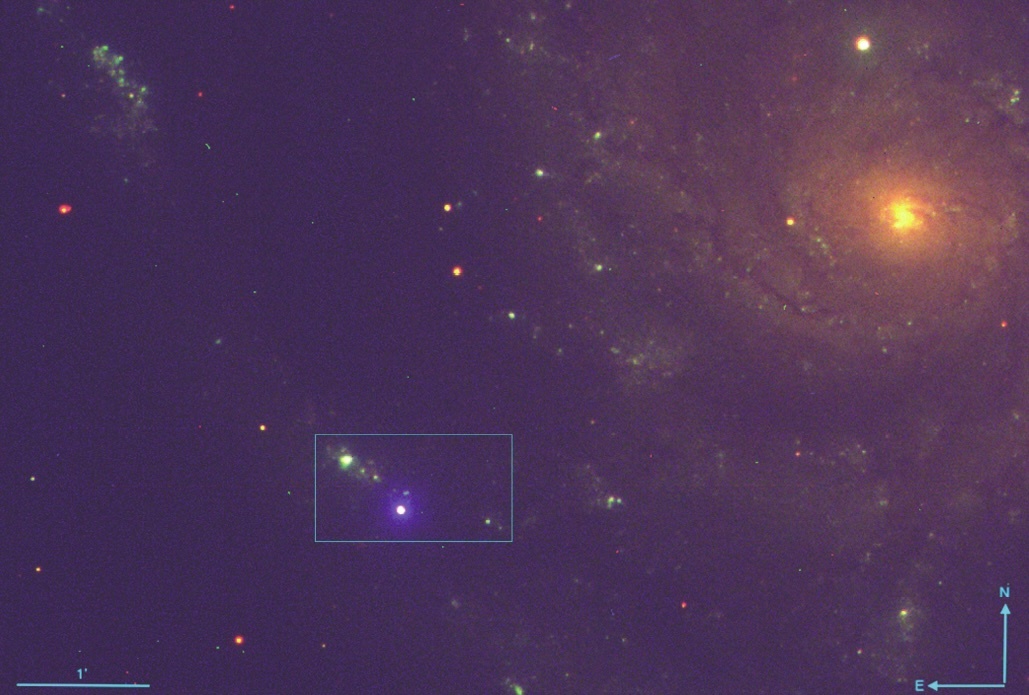Catching a supernova in action is tricky business. There is no way to predict them, and they don’t occur very often. Within the Milky Way they only occur about once a century, and the last one was observed in 1604.
Of course, supernovae occur in other galaxies too, but you still have to get lucky to catch them as they explode.
But that’s what happened last year, according to a new paper released in Nature this week. Japanese amateur astronomer Koichi Itagaki, observing a nearby galaxy named Messier 101 (colloquially known as the Pinwheel Galaxy), recognized that something special was happening. He had just observed a new supernova. It was dubbed SN 2023ixf.
The initial phase of a supernova is measured in hours, so astronomers had to act fast. Within five hours, Itagaki had reported the sighting to an international astronomical reporting database called the Transient Name Server. Less than an hour after that, professional astronomers were already rushing to turn their telescopes to look at the new explosion.
The discovery took place on May 19, a Friday night, and it was a scramble to get everything in place across multiple time zones.
“It’s very rare, as a scientist, that you have to act so swiftly,” says Avishay Gal-Yam of the Weizmann Institute. “Most scientific projects don’t happen in the middle of the night, but the opportunity arose, and we had no choice but to respond accordingly.”

Gal-Yam’s PhD student and lead author of the paper, Erez Zimmerman, was part of the team who stayed up all night collecting data, and sharing information with the Hubble Space Telescope operators in time to make high-quality observations. Speed was of the essence.
“That’s what makes this particular supernova different,” says Zimmerman. “We were able – for the very first time – to closely follow a supernova while its light was emerging from the circumstellar material in which the exploding star was embedded.”
The team had already applied for time on Hubble, intending to observe existing supernovae remnants in UV light. They got lucky in being able to observe a brand-new one instead. And even luckier that Hubble had just recently observed the same area, meaning that they not only captured the supernova in action, but also captured the star and its conditions in the days immediately before the explosion. These before-and-after observations are incredibly valuable in understanding the final days of a star’s life.
“Stars behave very erratically in their senior years,” says Gal-Yam. “They become unstable and we usually cannot be sure which complex processes occur within them because we always start the forensic process after the fact, when much of the data has already been lost.”
Data from SN 2023ixf was also collected in X-ray from NASA’s Swift spacecraft, and spectra were obtained from the ground-based Keck Observatory in Hawai’i. Together, all these observations helped piece together the evolution of the explosion as it changed over time.

Another PhD student on the team, Ido Irani, says that the explosion probably formed a black hole, replacing the aged red giant that once sat in its place.
“Calculations of the circumstellar material emitted in the explosion, as well as this material’s density and mass before and after the supernova, create a discrepancy, which makes it very likely that the missing mass ended up in a black hole that was formed in the aftermath of the explosion – something that’s usually very hard to determine,” he says.
Follow-up observations are expected to provide even more details about the event, and help astronomers understand more precisely how supernovae occur and interact with their environment.
Learn More:
“A Hundred Million Suns.” Keck Observatory.

